The Last of the Ptolemies
Nevertheless, the laws of the genre and artistic expediency require following a certain pattern, the "unnecessary" facts that do not fit into such a scheme are usually ignored by the authors. The most famous Hollywood film about Cleopatra, made in 1963 by Joseph Mankiewicz, begins as a tutorial on stories, but the further the action develops in it, the more freedom the authors allow, and in the final it differs little from the other, from a historical point of view, much less conscientious works. As a result, we have a peculiar myth, entrenched in the public consciousness, and Cleopatra became a literary character rather than a real historical person.
First of all, it should be said that Cleopatra was not an Egyptian by birth and had nothing to do with the previous pharaoh dynasties. From 323 BC in Egypt, the rules of the Hellenistic dynasty of the Ptolemies, founded after the death of Alexander the Great by one of his commanders, Ptolemy Soter (Keeper). The capital of the Ptolemies, Alexandria, was larger than Rome of that time in size and accumulated wealth (it would still be "brick" or "marble" at the time of Octavian Augustus). The Egyptian capital of the times of Cleopatra can only be compared with Athens of the Classical period in the history of ancient Greece - adjusted for scale, of course. The population of Alexandria was mixed: the Macedonians, the Greeks, the Jews and the Egyptians lived in the city (the modern Copts are descendants of the Egyptian indigenous population). It was possible to meet in it also Syrians and Persians. In addition to Alexandria, there were two more "Greek" polis in Hellenistic Egypt: the formerly existing colony of Navkratis (in the Nile Delta) and founded by Ptolemy I of Ptolemais (in Upper Egypt). Ancient Egyptian cities such as Memphis, Thebes, Hermopolis, and others did not have the right of self-government.

The main god of Hellenistic Egypt and Alexandria became Serapis, portrayed in the guise of a bearded man in a tunic with calaf (measure of grain) on his head. Most researchers consider this cult a syncretic (that is, holistic, but consisting of disparate elements), invented by Ptolemy I to unite alien Greeks and Macedonians and his Egyptian subjects. Supporters of this point of view find features of such gods as Osiris, Apis, Hades and Asclepius in Serapis. But some consider Serapis a Babylonian god, or one of the hypostases of Mithras. Even Plutarch and Clement of Alexandria (150-215 AD) did not come to an unequivocal opinion about the origin of this cult, who in their writings present several versions at once. After the annexation of Egypt by Rome, the cult of Serapips spread widely throughout the Empire, its temples were found even in the territory of modern England. An indirect evidence of the popularity of this cult are the words of Tertullian (II-III century AD) that "all the land swears to Serapis".
Ruins of the Temple of Serapis in Pozzuoli, Italy
The army of the Ptolemies was traditionally formed from Macedonian and Greek mercenaries. As for the indigenous population of Egypt, its position has changed little under the Ptolemies, for the most part the local Egyptians were engaged in farming and, in fact, were in the position of state serfs.
Imitating the pharaohs, in order to preserve the "purity" of the royal king, the rulers of Egypt took their sisters as wives. In the palace, they spoke only in Greek, and therefore Cleopatra was Macedonian in terms of blood, and Greek in terms of education.
Shakespeare, describing the appearance of Cleopatra, used the expression "cute gypsy face" (no more, no less!). It is not surprising that all the actresses who play the role of Cleopatra traditionally present her to us as a burning brunette (after Elizabeth Taylor I can’t even imagine her any other way):
However, given the origin of our heroine, we can assume that, in fact, she was a blonde with blue or gray eyes - the Macedonians of those years had blond hair.
The most famous example is the appearance of Alexander the Great. Here, Plutarch, for example, writes about Pierre:
And Pierre, as you know, was red-haired. Consequently, the red hair, was Alexander. And there is no reason to think that his closest friends and associates (among whom Ptolemy was) differed sharply from him - in this case, contemporaries would not fail to note the uniqueness of his appearance, and toadies would use "non-standard" and atypical hair color as one of the evidence of the divine origin of the conqueror.
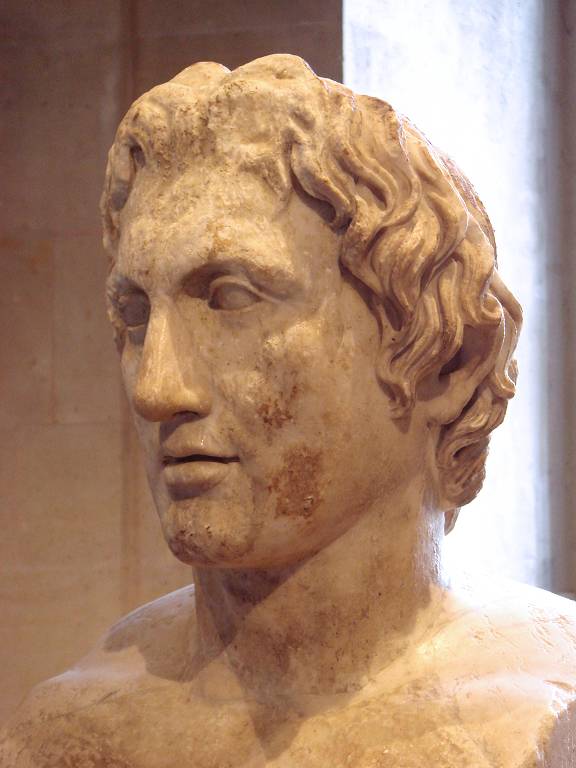
Looking ahead a little, let's also say about the appearance of Roman women who will be mentioned in this article - Fulvia, two Anthony, Octavia. Many researchers believe that among the women of ancient Rome of the Republic period there were quite a few blondes, the peculiarity of the hair color of which was a reddish tint. After mixing the indigenous Roman population with numerous people from the colonies, such hair began to be considered a sign of aristocratic origin, and women all the time tried to reproduce the same color. There were two recipes. The richer women rubbed their hair with a mixture of goat's milk soap (it was borrowed from the Gauls in the 1st century AD) and ash of a beech tree, after which they sat all day with their heads uncovered in the sun. The richest also put gold powder on their hair. The poor also poured bovine urine on their hair - and, again, went to the sun. Fashion successfully survived the collapse of the Roman Empire, and the above methods to make your hair the same “like the real Romans” were known even in the Renaissance. This particular, golden-red, hair color, we can now see in all the women depicted in the paintings of Titian: this shade later received the name "hair color Titian." Look, here are such hair could have many women of ancient Rome:

Hair of that color, according to Michelangelo, should have been in Cleopatra:

Modern chemistry also offers dyes labeled "Titian", but to achieve this "Roman" tint with their help, as a rule, fails: hair turns out to be too bright, too red, look unnatural, and sometimes even vulgar.
But back to our heroine. The name Cleopatra means "Glorious after the father", she wore him seventh in a row in her family, was the daughter of Tsar Ptolemey XII, whose inclinations give an idea of his nickname. whose nicknames give an idea of his inclinations. The first of them - "Flute", and even more contempt - "Piper": playing the flute was not considered an occupation worthy of the king. The second - "New (or" Young ") Dionysus", speaks of this king's passion for religious mysteries.
Perhaps you have heard more than once how a crowd of Egyptians dealt with a Roman who killed a cat - this story, taken from the writings of Diodorus Sicilian, is constantly cited in various articles on the worship and deification of cats in Egypt. It happened during the reign of Ptolemy XII - around 66 BC.
This indicates, on the one hand, the hatred of the common people to Rome and the Romans, who actually controlled everything in Egypt and were only looking for a reason for the final subordination of the country, and on the other, about Ptolemy’s dissatisfaction, which made any concessions to Rome, just not to provoke him to direct attack.
Cleopatra is not the only child in the family, she had two brothers and three sisters: her own and two stepbrothers (from her father’s first marriage). It was the rebellion that brought Cleopatra's half-sisters to power - Trifana (she could also be Ptolemy's wife) and Berenicus, that triggered Rome's intervention in Egypt’s affairs. The cause of the uprising was the seizure of Rome on the island of Cyprus, where Ptolemy's brother ruled (58 BC). The attitude of Roman officials to the "friends and allies of the Roman people" is eloquently indicated by the meeting of Ptolemy and Marcus Portia Cato the Younger (at that time he was a quaestor with the powers of a proprietor) on the island of Rhodes: Cato received the king of Egypt, who had sent his troops to help not so long ago fought in Palestine Pompey, "sitting on the toilet seat and emptying the intestines." I want to believe that Marie Yovanovitch behaves more decently in Kiev.
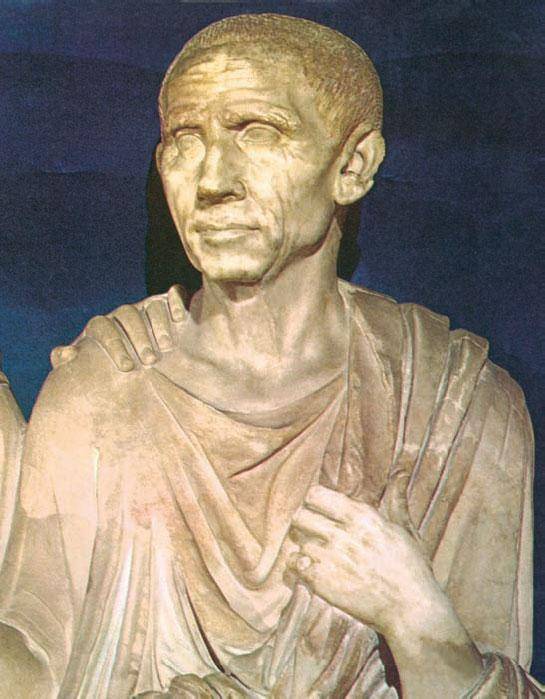
In Rome, they nevertheless decided to help Ptolemy return the throne of Egypt, but the strength of the bureaucracy was such that for three years in the Senate they could not decide which of the commanders to send “to restore order” in Alexandria. It ended with the Roman governor in Syria, Avl Gabiniy, who arbitrarily sent troops to Egypt, who suppressed the rebellion and restored Ptolemy to the throne (despite the well-known saying, the winner in Rome was tried and brought to ruin by a fine of 10 000 talents). Trifaene was lucky enough to die to defeat, and Berenice was executed by order of her father. The young commander who commanded the Roman cavalry on that campaign apparently had heard about the beauty and talents of the eldest of the king’s surviving daughters - of all the children of Ptolemy, he only wanted to see her. So for the first time Marc Anthony and Cleopatra, who at that time barely turned 14 years old, met. Later, Anthony claimed that he fell in love with Cleopatra from that first meeting.
Here is how Cleopatra and Plutarch describes in his “Biographies”:
Communicating with clever and charming Cleopatra made such an impression on Mark Antony that he began to look for a new meeting, and this rocked the royal court - the unremarkable young Roman “general” of plebeian origin was apparently not considered a suitable party for the Egyptian princess. The tutor of the princess, the eunuch Apollodorus, did everything possible to prevent a new meeting under various pretexts.
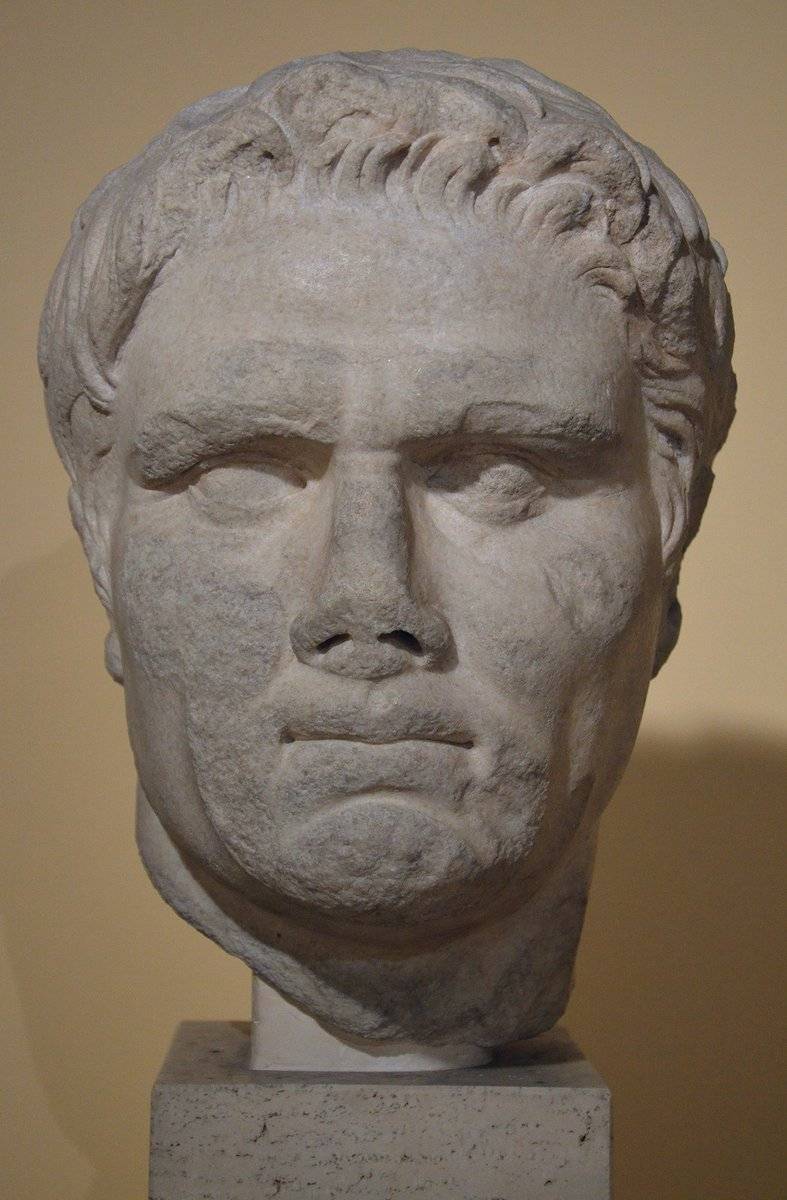
Three years later, Ptolemy XII died, he bequeathed his throne to 18-year-old Cleopatra and her 13-year-old brother, who became her husband and king under the name of Ptolemy XIII.
In the frame, we see not the blond Macedonian, what Ptolemy should have been, but the typical Egyptian, and even with obvious signs of degeneration on his face (immediately you begin to sympathize with the “beauty” Cleopatra, who is forced to live with this “monster”), the same people appear from his entourage. But look what Ptolemy XIII looked like in reality:
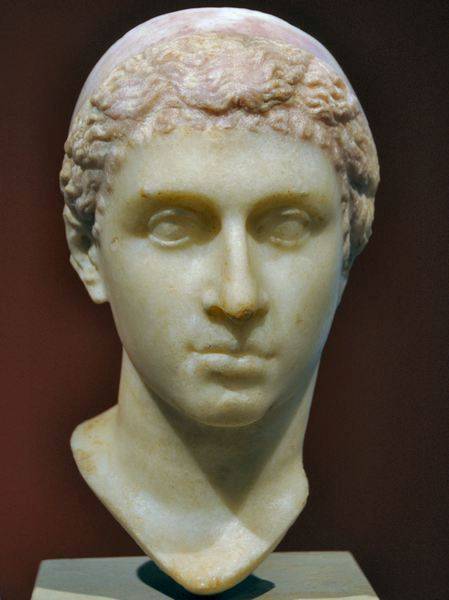
Nice and quite intelligent-looking young man, is not it? If you put the busts of Ptolemy XIII from the Old Museum of Berlin and Cleopatra VII from the Vatican alongside, the external similarity is just striking the eye, it immediately becomes clear that we have close relatives.
Ptolemy XII appointed Rome, specifically Pompey the Great, one of the members of the first triumvirate (Pompey, Caesar, Crassus) to be the guarantor of his will. Ptolemy XIII, in the opinion of his educator, the Greek Potin, was to become (at least in the coming years) a purely decorative figure, he was going to rule the country himself, but, to great surprise, he found a strong opponent in the face of his older sister and the wife of the new king. But Ptolemy had another sister, Arsinoe, whom he could marry without breaking traditions, so it was decided to kill Cleopatra uncomfortable for all. However, Apollodor, who was already familiar to us, found out in time about the conspiracy and, together with his ward, disappeared into Syria, and not empty-handed: they managed to take out some of the gold used for recruiting mercenaries from Egypt. In addition, it was decided to apply for support to the eldest son of Pompey the Great - Gney the Younger, who was on a diplomatic mission in Egypt. The son of the triumvir reacted to the acquaintance quite expectedly, and was ready to interfere in the conflict on the side of Cleopatra, but in Rome, civil war broke out in 48, and Gnei was not up to Egypt. When the army of Pompey the Great was defeated by Caesar's troops near Farsala, a friend and executor of the father of the warring spouses fled to the gallery in Egypt and appealed to Ptolemy XIII for asylum. The advisers of the young king faced an almost impossible task: to refuse Pompey meant to turn him into a dangerous enemy, and to accept - to challenge Julia Caesar, who had won him. As a result, Pompey, who trusted the Egyptians, was killed and his head was presented to Cesar, who, to the surprise of the king’s advisors, was not at all happy about such a gift. Upon learning of Caesar's arrival in Alexandria, Cleopatra decided to meet with him at any cost, and since all approaches to the capital from land were blocked by Ptolemy XIII's troops, she went there by sea. Moreover, the famous scene in which Apollodorus brings it to Caesar's chambers in a rolled-up carpet is not at all an invention of the writers of the plays: it was about the life and death of the queen, and this was the only way to enter the palace. Caesar turned 53, the age is very dangerous for men beginning to age: there was no chance for him to resist Cleopatra. But not everything was so simple, this is what Dion Cassius (“History”) tells about further events:
"Gave", of course, loudly said: in fact, returned to Egypt, the island previously captured by Rome.
However, Caesar was not used to be defeated: Ptolemy XIII soon "drowned", and Cleopatra "married" another brother, who was only eleven years old. But the sympathies of the people and the Egyptian army, outraged by the mischief of the Romans, were on the side of Cleopatra's younger sister, Arsinoe, who was proclaimed queen. Thus began the war that lasted for 8 months, during which the famous Library of Alexandria burned down. After the victory, Caesar and his charge traveled along the Nile, enjoying love, glory and divine honors. But in Asia Minor, a mutiny of Farnak, the son of King Ponta Mithridates, broke out, which Caesar once defeated in one battle - remember: "I came, I saw, I won." Caesar again had to fight in the Black Sea region, and then he was forced to go to Africa, where Scipio and Yuba tried to gather supporters of Pompey. Returning finally to Rome, Caesar celebrated four triumphs at once in a month, and among the captives who followed his chariot was unhappy Arsinoe. After that, he sent to Alexandria an official invitation to the "Nile sovereigns" to come to him for the award of the title of "friends and allies of the Roman people." In November, 46 BC. Cleopatra arrived in Rome, hitting all the wealth and luxury.
But in December of this year, Caesar went to Spain, where Sextus Pompey rebelled. During this expeditionary expedition that lasted several months, the dictator fell in love with the young Greek woman of Enoy, the king of Western Mauritania, and lost interest in Cleopatra. The queen at this time was often visited by Mark Antony, who had fallen into disfavor and was removed from command of the troops. So it is still unclear to historians who exactly became the father of the 44 born in April BC. Cleopatra's son - Ptolemy Caesar, who was often called Caesarion.
This child was born in Alexandria, where Cleopatra fled after the murder of Caesar (15 March 44 BC).
After the division of the empire, Marc Anthony got the rich East, which, on the one hand, testifies to the high authority that this commander enjoyed in the army, and on the other, to the not too high popularity of him among the Roman citizens. Plutarch reports:
In addition, the Triumvir treaty provided for “the exchange of sacrifices”: Octavian sacrificed Cicero, Lepidus - his brother Paul, Mark Antony - Lucius Caesar, his uncle on the part of the mother.
Later, Octavian said of Cicero: "The scientist was a man that, true, that was true, he loved the fatherland."
Anthony put Cicero's severed head on the table during the feasts.
After departing to the East, Mark Antony was having fun in the city of Tarsa (present-day Tarsus, Turkey). Here he received reports that Cleopatra allegedly supported with money the Caesar's murderers hiding in Macedonia (which in fact had already died), and that she had poisoned her brother-spouse (which was true).
This information came at an opportune moment: Anthony used it as a pretext for calling Cleopatra - ostensibly, in order to demand an explanation from her. The arrival of the Queen of Egypt made a huge impression on the Romans: she was on a gold-decorated ship with purple sails and silver oars. Slaves were paddling to the sound of flutes, lyres and pipes, incense was smoking on the deck, and half-naked girls walked around among the crew members. The deck of the ship was covered with a thick layer of rose petals, the dishes were exquisite, the queen was fascinating. Here is a description of the arrival of Cleopatra, based on ancient sources, V. Shakespeare:
Shone on the waters of Kidna. Flamela
Forged gold feed.
And the purple were sails
So filled with fragrance
What the wind, flinching from love, to him clinging.
Silver flutes in the fret of their flutes
They crashed into the water that flowed after
In love with these touches.
The queen also portray no words.
She is more beautiful than Venus herself -
Although she is more beautiful than a dream, -
Lay under the brocade canopy
By the bed standing, handsome boys,
Like laughing cupids,
The movement dimensional motley
She was wrapped in a tender face
And because it does not fade his blush
But brighter flared.
Like the merry nereids,
Her attendants, bowing down before her,
Catching with admiration gaze of the queen.
... heady aroma
On the shore poured from the ship. And people
Leaving the city, they rushed to the river. "
Anthony did not ask Cleopatra questions for which he had summoned him. Again in love with her, he ordered to strangle Cleopatra's rival, who had fled from Rome, Arsinoe, and when the queen suddenly sailed to Alexandria, she followed her. 18 months continued the "sweet life" of the triumvir in Egypt. Cleopatra's feasts went into sayings, but, according to historians, sometimes she and Antony, dressed in the costumes of commoners and went to the port squash. These adventures sometimes ended in fights in which the ruler of the East sometimes had a bit, but he proudly stated that he had never in such alterations allowed him to offend his companion. Here is how this period is described in the life of Anthony V. Shakespeare:
Yes, noisy booze until morning;
Not braver than Cleopatra
Which is not more feminine than he ...
In broad daylight through the streets stagger
And start fist fun
With the stinking mob. "
And in Rome at that time there was a fierce struggle for power between Octavian and the supporters of Anthony, led by the missing triumvir's wife, Fulvia. Political battles escalated into civil war, Octavian and commander Marc Agrippa laid siege to the fortress of Perussia, brother of Anthony - Lucius.
Having received no help, after the 5 month siege, Lucius surrendered to Octavian, and Fulvia fled to Greece. All this forced Mark Antony to leave Cleopatra for a while and go to save his fate. When meeting with his wife, he told her about the final break. Shocked by such a betrayal, Fulvia fell ill and soon died. The clash of Octavius and Mark Antony seemed inevitable, but veterans in both armies recognized and greeted each other, which made their leaders lose confidence in the outcome of the battle. Starting a battle now seemed almost impossible. As a result, Octavian offered to make peace. Marc Anthony also did not rush into battle and easily agreed to the proposal of his rival. As a sign of reconciliation, the widowed Anthony in 40 BC married his rival's sister, Octavia.
From this marriage were born two girls - Anthony the Elder and the Younger (interestingly, one of them became Nero’s grandmother, and the other Caligula’s grandmother).
Cleopatra has twins born at this time - the girl was named Cleopatra Selena, the boy - Alexander Helios.
In 37 BC year, the triumvirs agreed to mutually recognize their authority for another 5 years and even tried to exchange troops: Octavian received 120 ships for war with Sextus Pompey, promising to replace the 4 legion for the war with Anthony Parthia (these legions were not waited by Anthony for him).
Boring family life in Rome soon tired of Anthony, under the pretext of the war with Parthia, he left Octavia and went to Antioch. In Alexandria, he had been absent for three years already, during which time he did not send a single letter to Cleopatra, the offended queen even forbade her from saying his name in her presence. More insulting was the official call to Antioch. Cleopatra restrained herself, and, as subsequent events showed, her calculation turned out to be true: their love relationship resumed. In order to make amends, Anthony presented Cleopatra with Cyprus, Crete, a share of the Jordan River, Lebanon, the northern part of Syria, and the city of a memorable meeting - Tarsa. Only three months later Anthony went to war with Parthia, and Cleopatra, after this meeting, gave birth to a boy, who was named Ptolemy Philadelphus.
Parthia of those years was a terrible opponent, but she, like a magnet, pulled all the Roman ambitious people to her. During the march to Parthia, Krass died and destroyed his army. Now, Mark Antony was to fight the Parthians. The cause of the war was the attacks of Parthia on Judea and Syria. While Anthony negotiated with Octavian and married his sister, the Parthian Prince Pacor defeated the governor of Syria, Lucius Detsidiy Saks, seized Antioch and Apamea, almost reaching the border with Egypt. Another army invaded Asia Minor. The personality of her leader is interesting: Quintus Labien, a supporter of Brutus and Cassius, sent by them to ask for help from the Parthian king Orod II (the commander of this king, Suren, defeated Mark Krass in 53 BC - these events were described in the article Parthian catastrophe of Mark Licinius Crassus (V. Ryzhov)
The beginning of the Parthian campaign was a success for the Romans. In 39-38. BC. the legate of Anthony Ventidius Bass initially defeated the allied forces of the Parthians and Quintus Labien, and the Parthian commander Farnapat was killed in this battle. Then the army of the Parthian prince Pacorus, who also fell in battle, was defeated on the same day that Mark Krass was killed 15 years ago. As a result, the Parthians were forced to leave Syria. These defeats led to the revolt and the murder of Orod II by his stepson, who ascended the throne under the name Arshak XV.
In 36 BC the troops of Mark Antony himself, whose army had 16 legions, troops of the Spanish and Gallic cavalry, 6 thousands of Armenian horsemen and up to 7 thousands of Armenian infantry, marched. Unlike Crassus, Anthony moved to Parthia not from Carr, but through Armenia. Siege machines, which slowed down the advancement of the main forces, he left far behind, instructing them to guard their ten thousandth Oppius Stationic squad. Parthians in the style of victorious Crassus Suren smashed the corps of the Station (who was killed) and destroyed the siege weapons. Allied Romans were part of this detachment of Pontus, whose king, Polemon, was captured (he was later released for a large ransom). This failure, which showed that the Parthians' strength and morale were not broken, led to the fact that the Armenian king Artavazd refused to go. Anthony, having lost his siege weapons, was stuck at the walls of the capital of the Medes, Fraaspa. His army soon began to lack food, forager teams were exterminated by the Parthians, residents of the besieged city also sometimes successfully attacked the Romans who built the embankment in front of the walls, once turning them into flight - Anthony resorted to the death of every tenth of the soldiers who had fled. The Parthians, evading the decisive battle, constantly struck the rear lines and communications of the Romans. With the approach of winter, Anthony gave the order to return to Syria, and this retreat was truly terrible for his army: Parthian cavalry constantly attacked, cutting off and exterminating the lagging units. Once Anthony had to personally, at the head of the Legion III, fight for help to the surrounded Flavius Gall squad: it was only during this local battle that 3 thousands of Romans died and 5 thousands were injured. The retreat from Fraaspa to the border of Armenia lasted 27 days, during which the Parthians attacked the army of Anthony 18 times, the total losses of the Romans were about 35 thousand people. At the end of this road, the Roman army presented a pitiful sight, the soldiers fighting over a piece of bread and a cup of water, once even attacking the porters of their commander. The situation was so severe that Mark Antony addressed one of the freedmen asking to kill him if he ordered. The misadventures of the Romans did not end after the withdrawal to Armenia: on the way to Syria from hunger and cold, they lost 8 thousand more people.

Not succeeding in the war with Parthia, Anthony decided to punish Armenia, the king of which he declared the culprit of his defeat. The following year, in alliance with the Medes, Anthony attacked Armenia. Tsar Artavazd II was treacherously captured during the negotiations (he will be executed by the Romans in three years), his capital, Artashat, was plundered. It was after this campaign that Cleopatra was proclaimed queen of kings, her son Caesarion - king of kings. Marc Anthony divorced Octavia and married the Queen of Egypt, celebrated the triumph not in Rome, but in Alexandria. All this caused great displeasure and irritation at home, where the offended Octavian officially declared him an enemy of the Republic and the Roman people. Now the war between them becomes almost inevitable, the only question is who is faster and better prepared for the start of hostilities. For 5 years, Anthony and Cleopatra have been building ships in the shipyards of Greece and Syria. Moreover, for fleet Cleopatra built traditional ships, and Anthony’s ships were floating fortresses with metal rams, towers and ballistas.
There were a lot of mutual claims at this time, but perhaps the most painful for Octavian were accusations of usurping the name of Caesar (he himself was only adopted) and claims on behalf of Caesarion for his role as head of the Caesarion party.
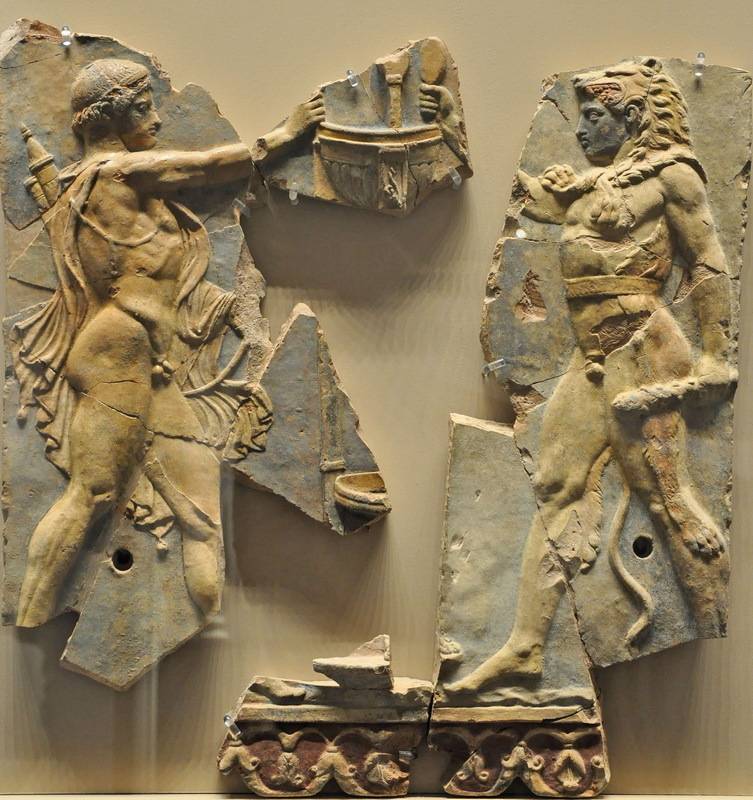
In December 33 BC the powers of the triumvirs (both Antony and Octavian) expired, and therefore Antony sent a letter in advance to the Senate of Rome, in which he promised to give up power if Octavian did the same. In 32, he assured the Senate that after defeating Octavian, he would give up power within 60 days. Anthony’s actions seemed more legitimate to many than Octavian’s activities, and in the same year both consuls and some senators fled to Anthony. As a result, Marc Anthony could rely on his own Senate, which was even more legitimate than the Roman one. But Antalya’s Italian and Roman allies demanded Cleopatra’s removal, which he was unable to do — not only because of her great love for her, which she probably didn’t already have, but mainly because of her great dependence on Egypt’s resources. The end came when Octavian, contrary to all laws and traditions, made the promulgation of Mark Antony's testament kept in the temple of Vesta, in which he asked to be buried in Alexandria and declared Caesarion to be the sole heir of Julius Caesar. The Romans were indignant, suspecting that their city and all of Italy would be given to Cleopatra, and that the capital of the republic was transferred to Alexandria. Meanwhile, Octavian found himself in a quandary: the war with Anthony would have been perceived by all in Rome as civil, and the Romans had not yet forgotten the calamities of the past internecine wars. I had to declare that Rome was in a state of war only with Cleopatra (the reason for it was the appropriation of the "heritage of the Roman people" - the territories donated to her by Anthony), hinting at the limited capacity of Mark Antony:
Thus, the “right of the first move” in the civil war was transferred to Mark Antony: if the one with his own forces does support Cleopatra, he, and not Octavian, will be responsible for civil strife.
Anthony decided to land his troops in Italy, where he still had many supporters, but he lost time, arranging festivals in honor of Cleopatra in Greece. Meanwhile, in winter 32-31 BC. his numerous warriors and sailors had difficulty supplying food and almost starving, diseases began (some researchers suggest that an epidemic of malaria began in the camp of Anthony). The consequence of all these troubles was a massive desertion, so that in the spring of 31, it turned out that the ships lacked about a third of the personnel. Octavian and his commander, Mark Agrippa, on the contrary, did a great job of recruiting and training soldiers and sailors, preparing ships for a combat march. In the spring of 31, he already had an army ready for battle, numbering 80 thousands of infantrymen and 12 thousands of horsemen. The Roman Navy at that time consisted of 260 birem and liburn (a variety of birem, had a closed deck), equipped with various devices for throwing incendiary mixtures.
Anthony, as we remember, intended to be the first to open the fighting first, having landed troops in Italy. And because the appearance of the fleet of Octavian, which in the spring 31 BC. actually blocked his ships in the Ambracian Gulf (western coast of Greece), it was an unpleasant surprise for him. Anthony and Cleopatra had at their disposal up to 100 thousands of infantry, 12 thousands of mounted warriors and about 370 ships. Anthony sent his army to Cape Shares (Aktii), but did not dare to launch a big battle. 8 months continued "strange war", during which there were only numerous minor skirmishes. The relationship between Antony and Cleopatra at this time became increasingly strained. Anthony was inclined to give a general battle on land, Cleopatra was for the battle at sea. In addition, the couple began to share the skin of an unkilled bear and constantly argued whether to enter Anthony in Rome alone, or Cleopatra should take part in the triumph. Agrippa, meanwhile, captured the island of Leucadia and the cities of Patras and Corinth, practically cutting off Antony’s army from the main supply bases.
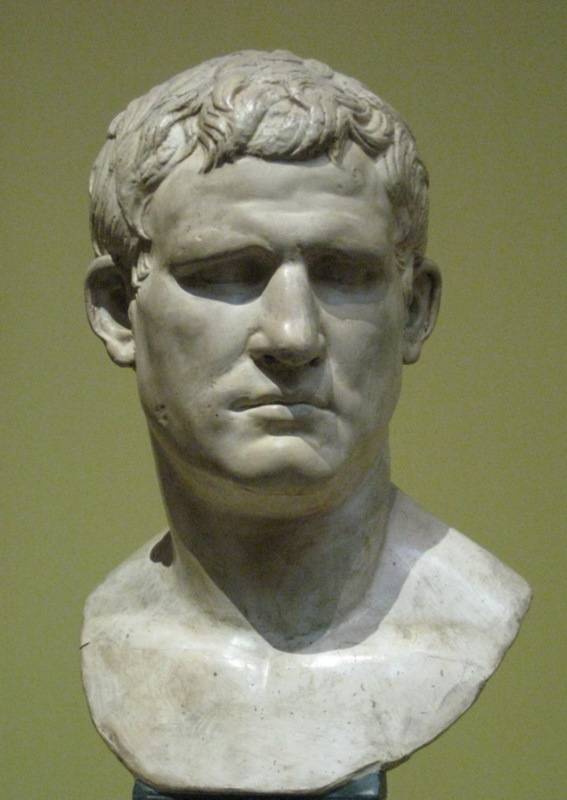
The position of Anthony’s army was now almost critical, and Cleopatra insisted on returning to Egypt, where there was another army numbering 11 legions. The land retreat through the lands already devastated by a huge army was hardly possible, and therefore it was decided to evacuate the most combat-ready units of the army by sea. 170's best ships were selected from the Anthony fleet, and the most experienced soldiers were deployed on 22 000. In addition, Cleopatra's 60 ships were sent to Egypt. The military treasury was transferred to the flagship. The rest of the ships were burned, which, in essence, doomed the soldiers left on land. Perhaps these units already represented an armed and poorly controlled crowd, and Mark Antony, like Napoleon at Berezina, did not consider it necessary to save them with the price of the death of elite formations. All this suggests that the main purpose of Anthony in the famous battle at Cape Shares (which is considered to be the last great naval battle of Antiquity) was not a victory, but an attempt to break from the coast of Greece to Egypt. On the eve of the decisive battle, two captains Anthony deserted, who told Octavian about his plans. No less important events took place in Anthony's camp: on the night from the first to the second of September 31 BC. in the presence of numerous guests, Cleopatra handed her husband a cup of wine, throwing a flower that adorned her hair. At the last minute, she threw the cup on the floor, announcing that the flower had been poisoned, and stated that she had nothing to get rid of Anthony at any moment. After this quarrel, the ships of the Egyptian fleet were ordered to enter the battle only by a special signal. As a result, Antony's 170 ships were forced into battle with the superior forces of the Romans - 260 ships.
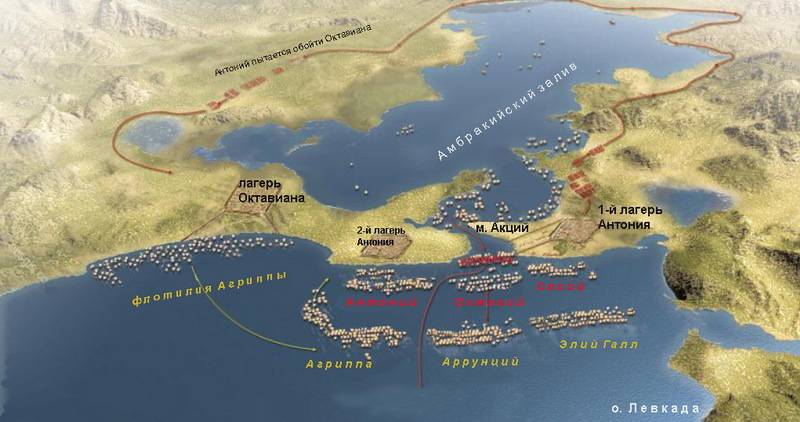
In the ensuing naval battle, the tactics of the opposing sides were as follows: Anthony's ships tried to ram the lighter ships of Octavian and Agrippa, while the Romans showered catapults and a ballist with incendiary projectiles and tried to bring the battle into a boarding battle in which well-trained crew, in a well-trained crew, would be able to transfer the battle into a boarding battle in which well-trained crew had to fight. had an advantage.
Following the approved plan, the avant-garde and part of the ships of the center of Anthony started a battle with the Roman ships, while the others set sail and left at sea. About a third of Antony’s ships managed to break through, followed by lighter, more maneuverable Egyptian ships. Plutarch reports:
Marc Anthony, jumping into a light galley, followed Cleopatra, without giving command to anyone.
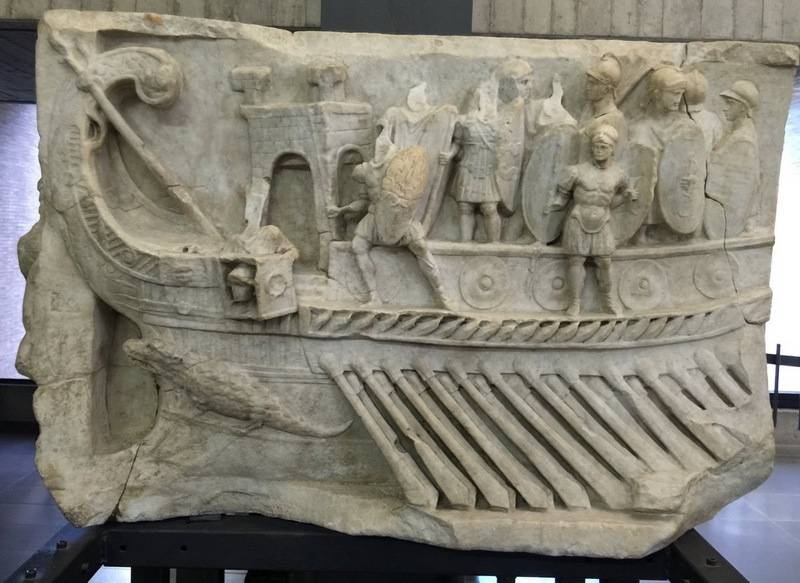
Traditionally it is believed that the flight of the Egyptians led to a panic on Antony’s ships that continued to fight. But the ships of Anthony desperately defended themselves for several hours, and some of them for two more days. And 7 days waited for its leader, the army he left on the shore. Plutarch reports:
However, modern researchers are skeptical of this testimony of Plutarch, believing that, in fact, the legionnaires did not expect Anthony, but were actively bargaining with Octavian, and were very successful in this occupation: those who wanted to continue the service, were accepted into his army, and veterans received land in Italy or the provinces.
Anyway, the behavior of Anthony in that battle was considered by many to be craven, and the cynicism shown in relation to the army being abandoned was bordering on treason. Shakespeare ascribes to those who learned about the death of Anthony Octavian these words:
The universe would have shaken with a crash.
Earth would have to shudder
On the city streets to hurl
Lviv from the desert and throw the citizens
Into the lions caves. His demise
Not just human death.
After all, the name "Anthony" was
Half the world. "
In fact, the disgraced, deadly tired man, who would never be the former Mark Antony, returned to Alexandria. His military reputation died irrevocably, both enemies and allies understood this perfectly. Therefore, Octavian did not need to express so pathetic.
Six months later, the ambassador from Octavian arrived in Alexandria. He offered life to Cleopatra and even the throne of Egypt, but demanded the head of her husband. Suspecting that Octavian wants to destroy Anthony with her hands only so that later, taking advantage of any insignificant reason, to deal with herself, Cleopatra would answer neither yes nor no, and would pull time. A completely discouraged Mark Antony promised to give up everything if he was allowed to live as a simple citizen in Alexandria or Athens. In anticipation of death, Cleopatra ordered to finish the decoration of her mausoleum, built next to the palace. At the end of July 30 BC, when Octavian's troops entered the territory of Egypt, Anthony still came out of a daze. 31 July he won his last victory: attacked and broke the cavalry of Octavian. Inspired by the success, on August 1 he sent the Egyptian fleet to the sea and saw that he surrendered to the enemy without a fight. Victorious cavalry without orders moved forward and folded. weapon. It was all over.
The significance of the defeat of Cleopatra and Anthony, and the annexation of Egypt to Rome (30 BC) is such that these events are traditionally considered the end of the Hellenistic era.
But the main characters of this tragedy were still alive. Confident in the betrayal of his wife, Anthony returned to the palace. Cleopatra, having learned about the betrayal of the army, hid with two maidservants in a mausoleum (we already heard their names in Plutarch’s testimony - “Irada, cleaning her mistress’s hair, and Kharmion”). Anthony, in her order, was informed that his wife had committed suicide and he, who was just ready to kill Cleopatra, suddenly became desperate. He asked his beloved slave named Eros to kill him, but he pierced himself with the sword. Antony's suicide attempt was less successful. Seriously wounded, Anthony asked the servants to finish him off, but those in fear ran from him. Finally, the messengers of Cleopatra appeared - confident in the death of her husband, she sent them for his body. With the help of Anthony's ropes on stretchers, they were raised to the mausoleum through the window of the second floor. Here he died in the hands of Cleopatra, and she negotiated with Octavian for a month in the ghostly hope of preserving the throne of Egypt for her children. Having collected the treasures of Egypt in her tomb, Cleopatra vowed to burn them, if Octavian did not forgive her, and the winner, who had previously counted on rich trophies, had to reckon with these threats. But the Roman officer who was guarding her, Cornelius Dolabella (who fell in love with her and reported Octavian’s intentions), said that Octavian would kill all her children if he lost the spoil. And the fate of the eldest of them, Caesarion, has already been solved - he will be killed anyway. The very same queen is needed by Octavian only as a trophy - she will be led through the streets of Rome in disgrace. That's when Cleopatra made her choice between death and disgrace. Having lost hope, Cleopatra descended into the cellars at night, where she tested various poisons on slaves. "Experiments" have convinced her that the most painless death is from the bite of the Egyptian asp: it does not cause suffering, the person quickly falls into a dream and does not wake up.

By order of Cleopatra, one of these snakes was brought to her in the basket of FIG.
Having dressed in festive clothes, the queen with a needle prick woke and angered a snake. Irada and Harmion followed suit. Cleopatra's death was the plot of numerous paintings by Renaissance Era masters, but not all of them correctly represented the circumstances of her death. Here are some of these pictures:
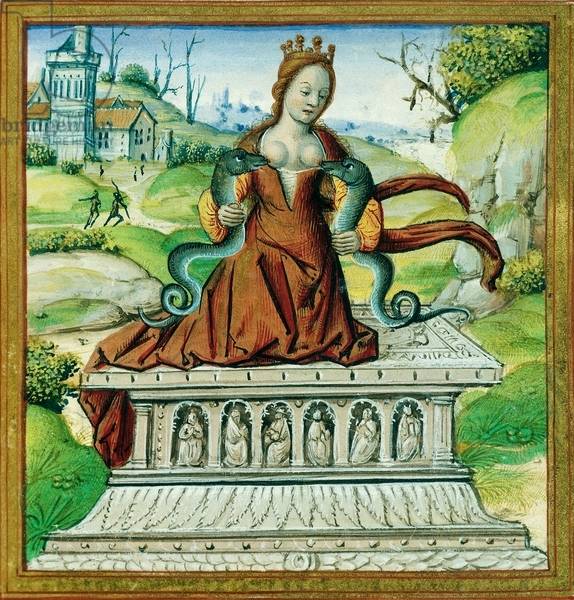

Thus, at the age of 38, the all-powerful Queen of the East had just recently died. In the last message of Cleopatra to Octavian, just one phrase: "I want to be buried in the same grave with Anthony." Octavian, who before the campaign publicly promised to arrange a triumphal procession in Rome with the queen of Egypt, tied to his chariot, came out of the situation, ordering the golden statue of Cleopatra to be chained to it, which he dragged along along the ground. Caesarion and the son of Anthony of Fulvia Antulla, in which Octavian saw the contenders for power in Rome, were executed. The remaining children of Anthony and Cleopatra were brought up in his family by his ex-wife Octavia, the sister of the winner.
This is the ending of one of the most romantic stories that humanity knew.
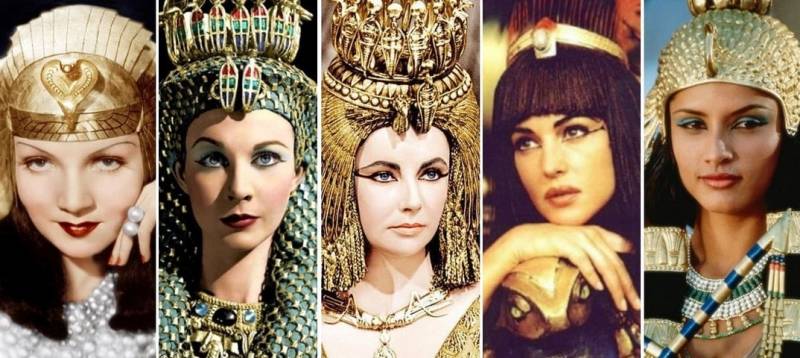
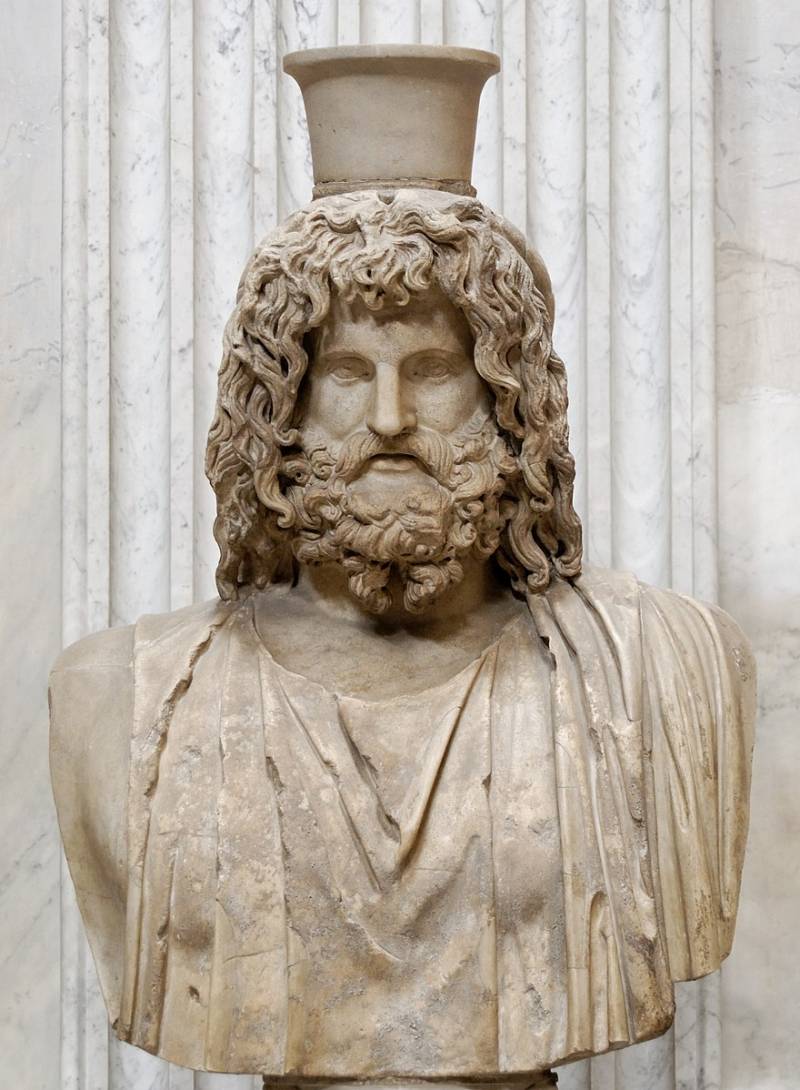
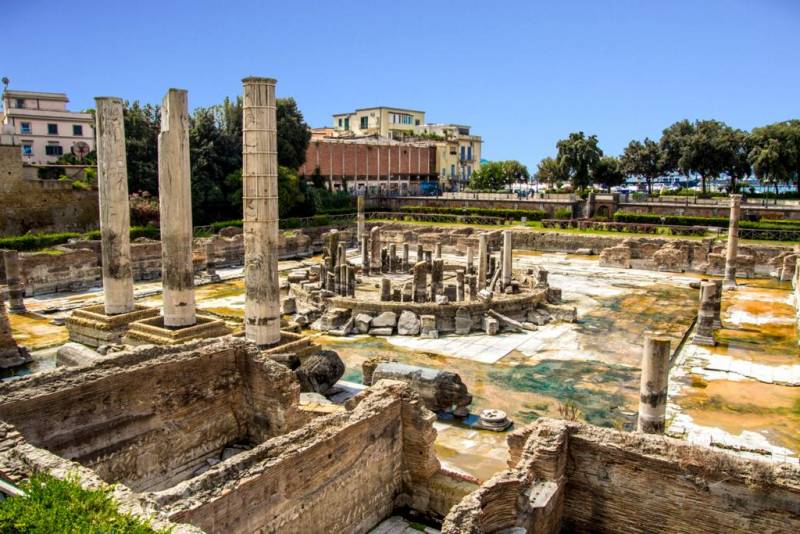
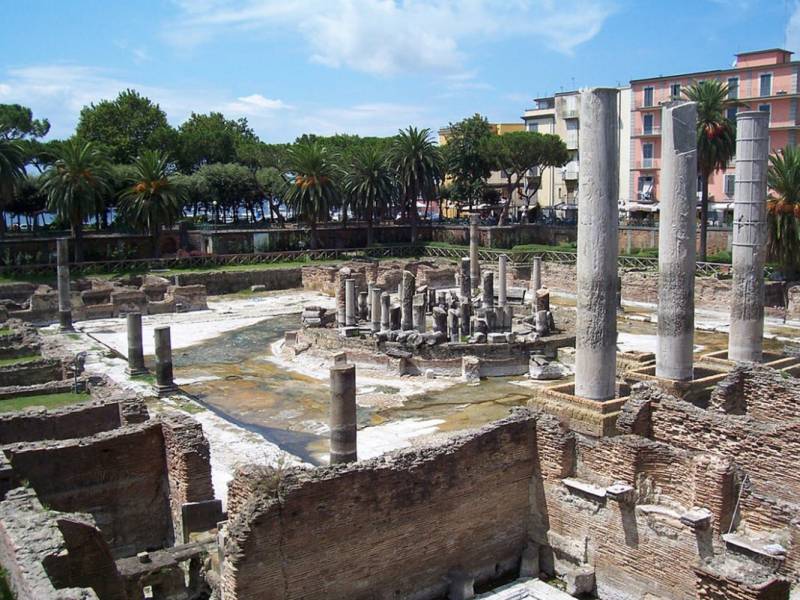
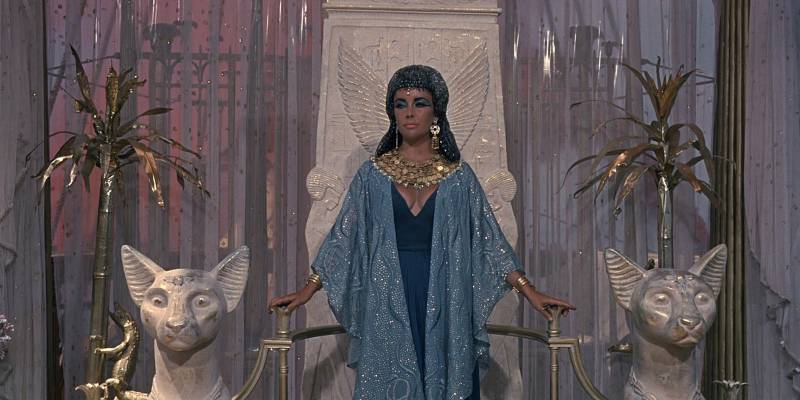
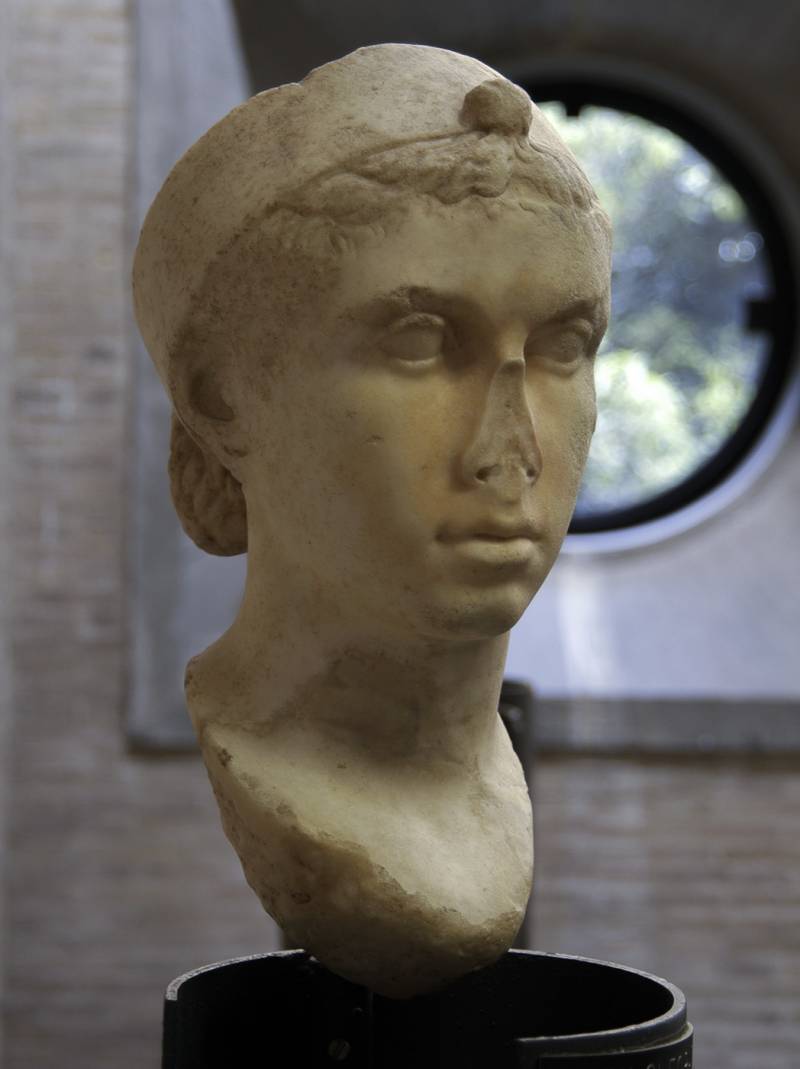
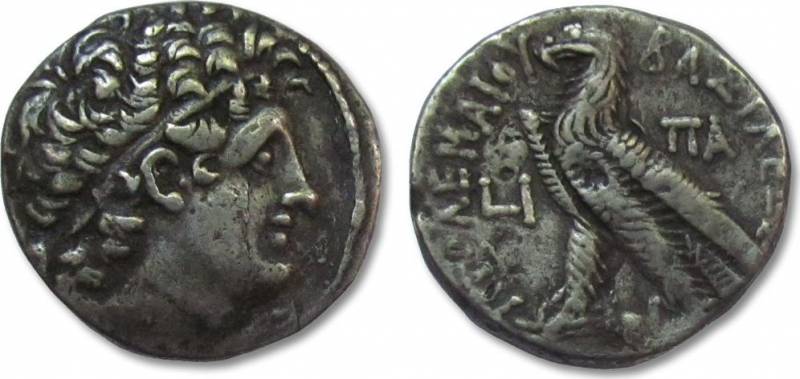
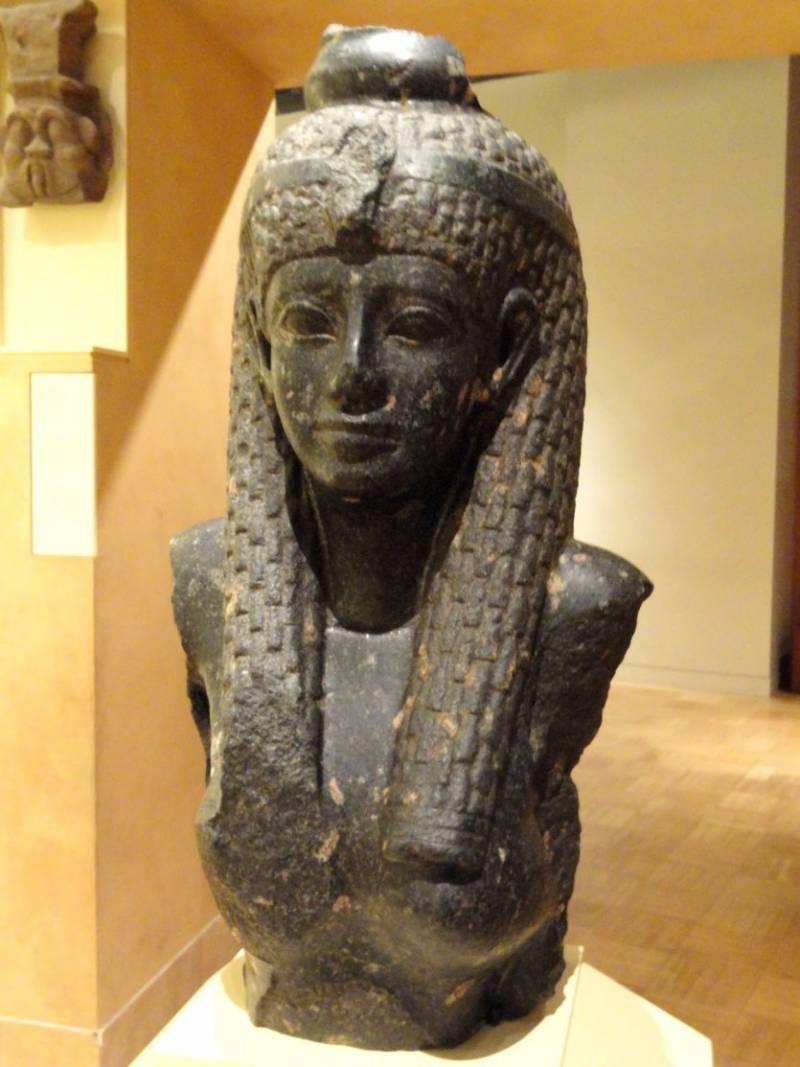
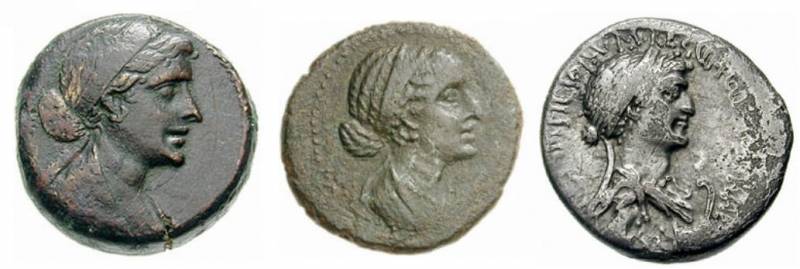
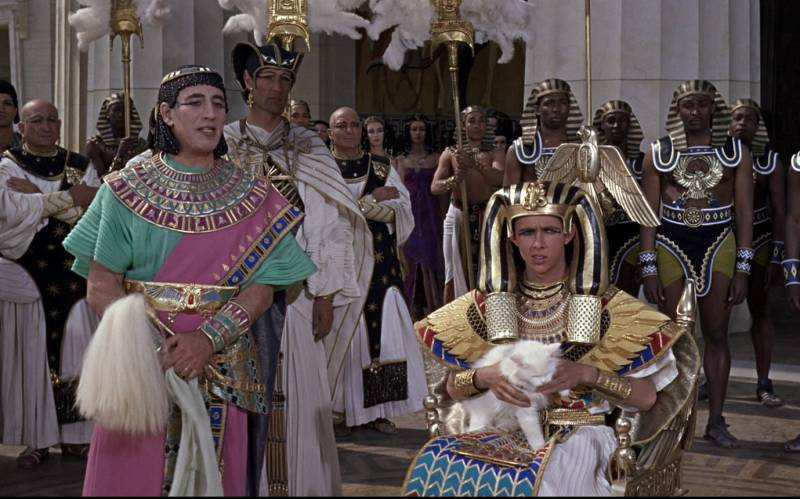
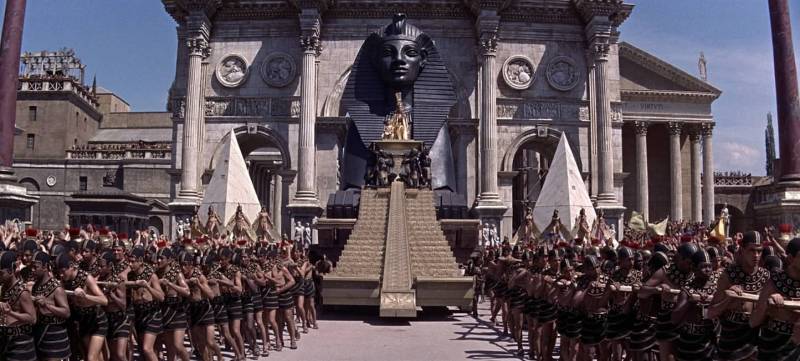
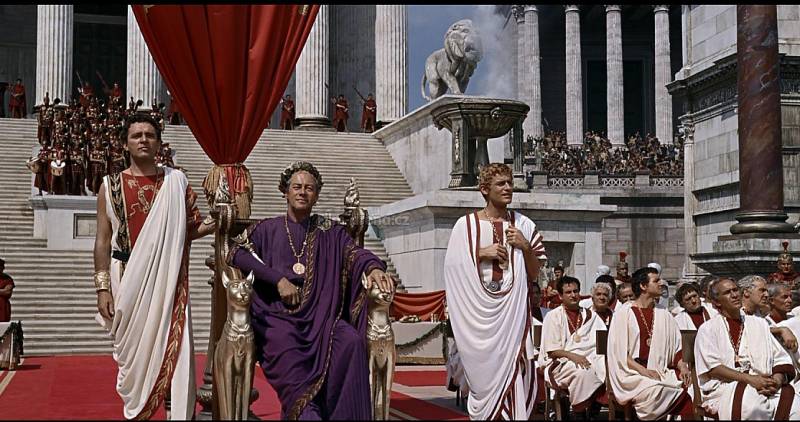
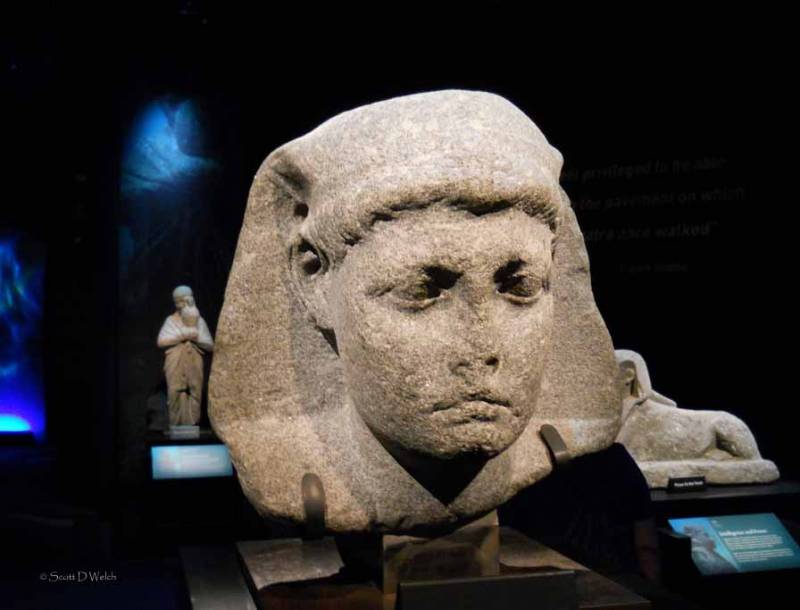
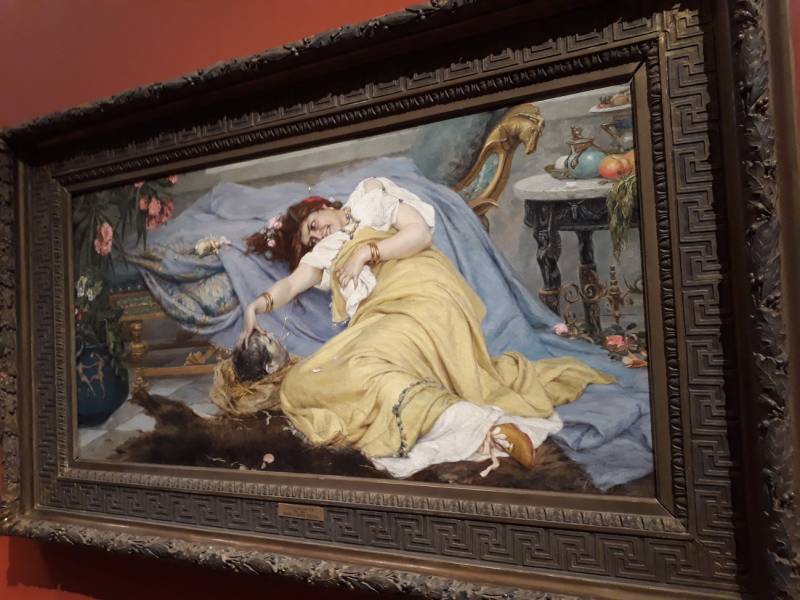
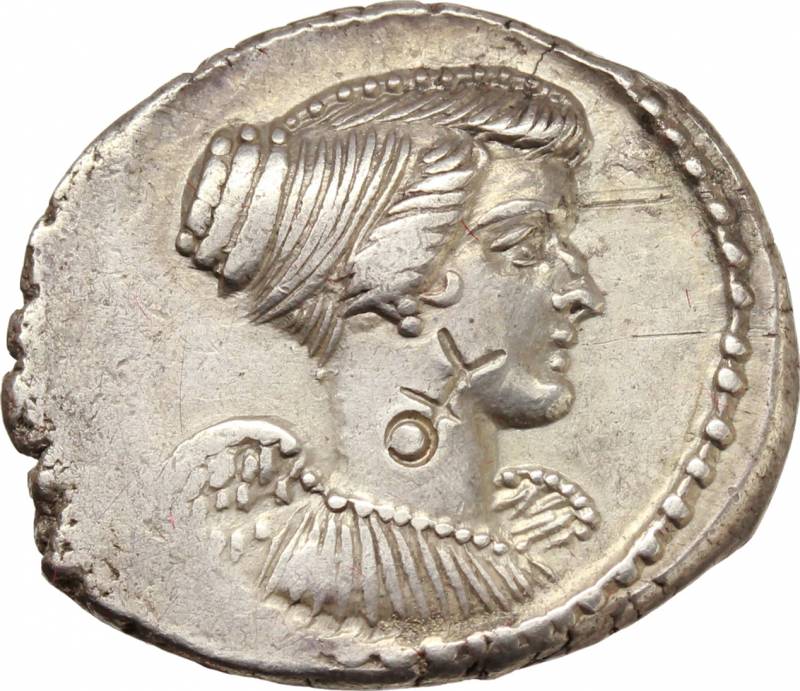
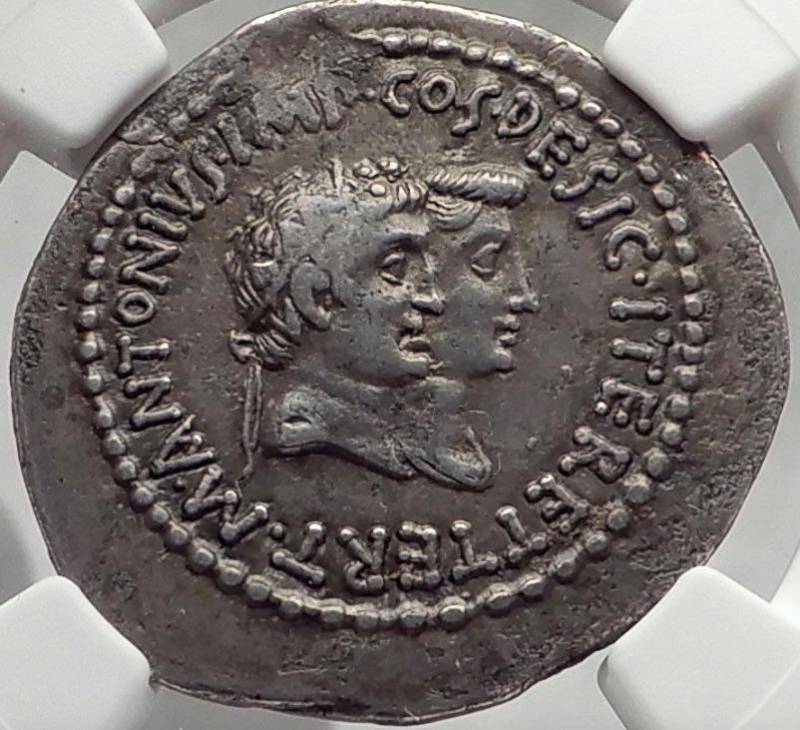
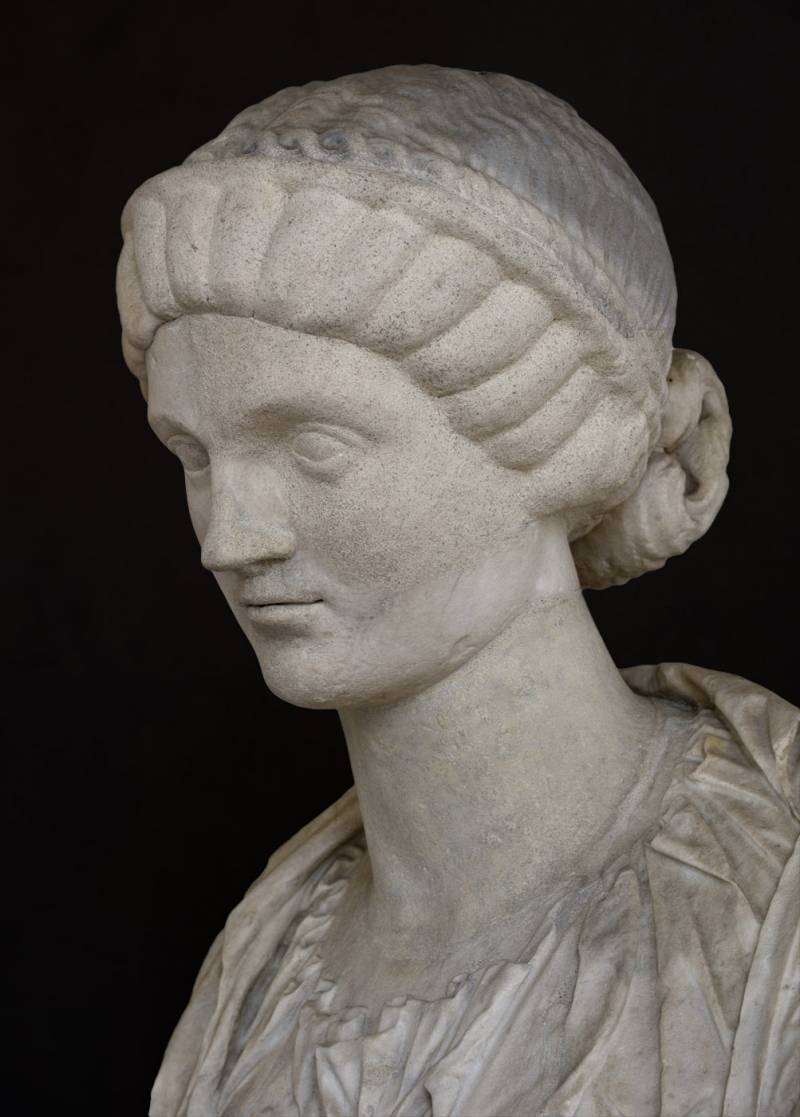
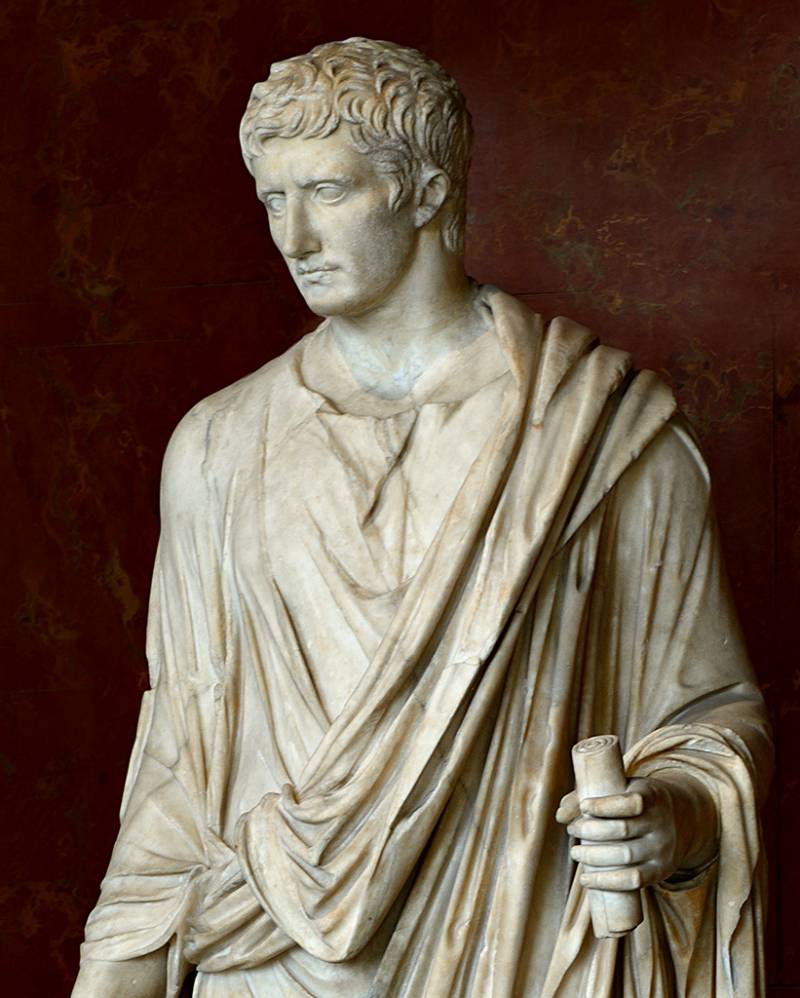


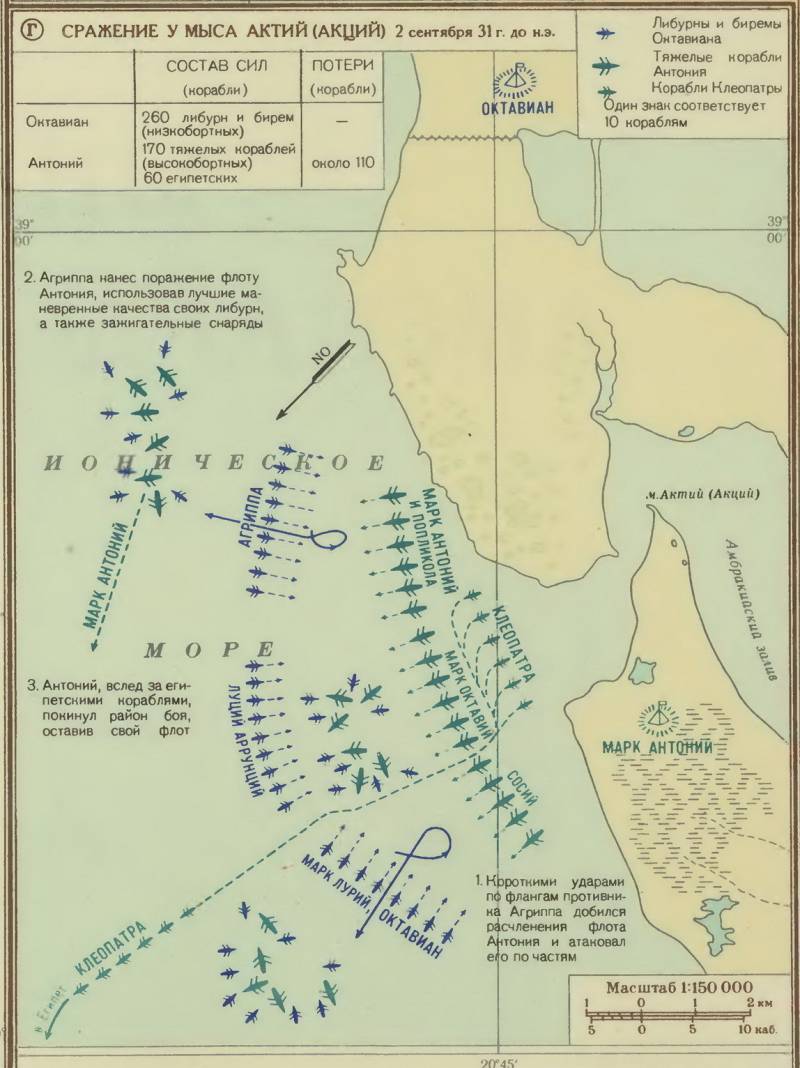
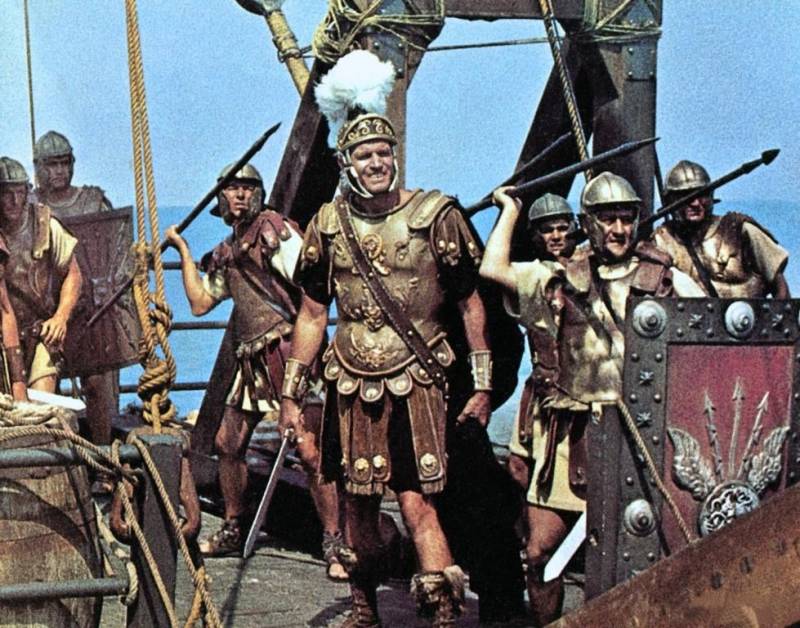
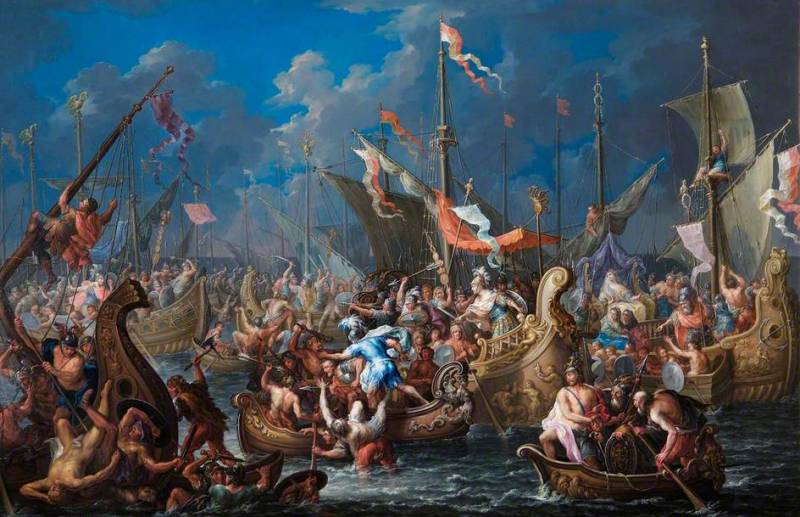
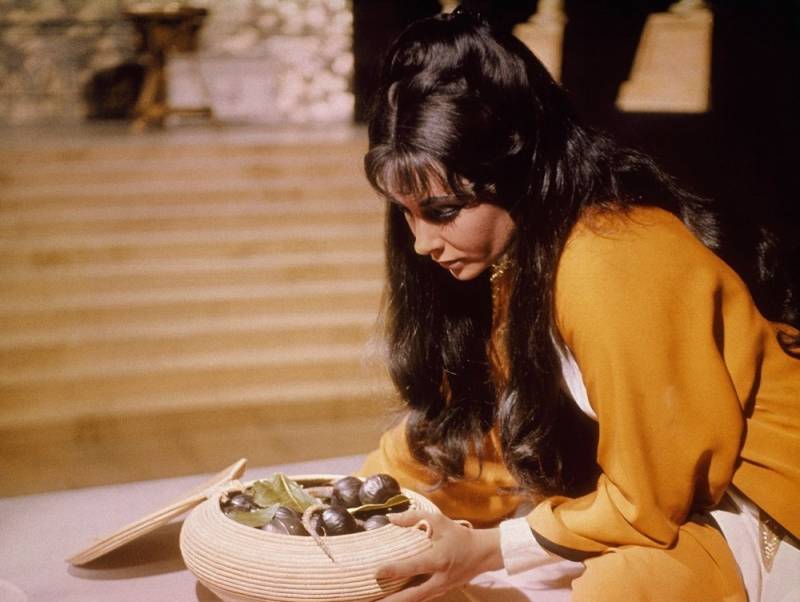
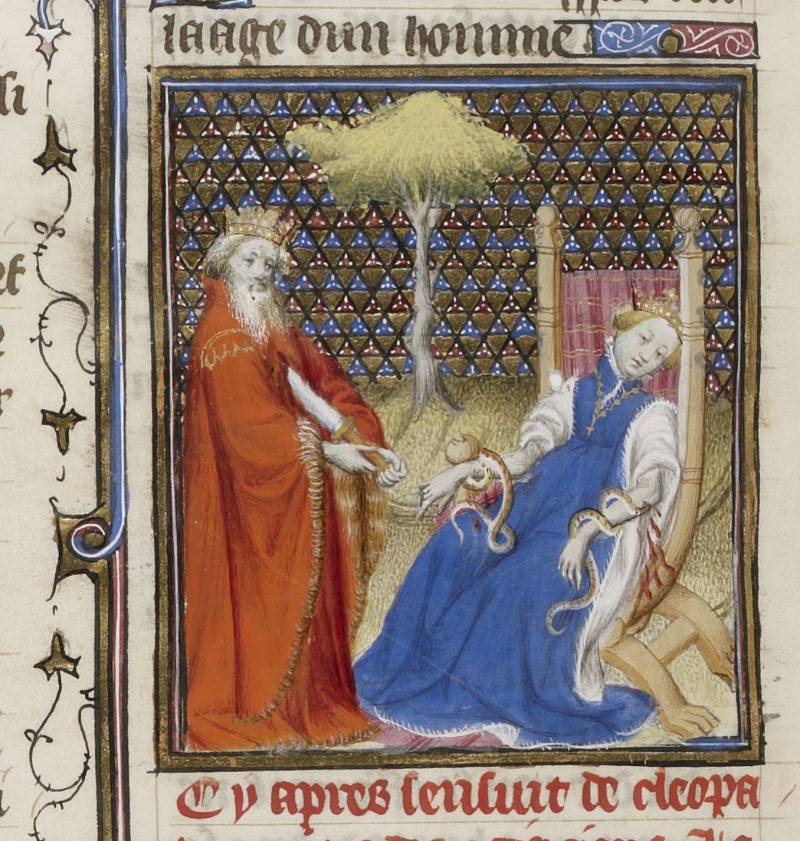
Information